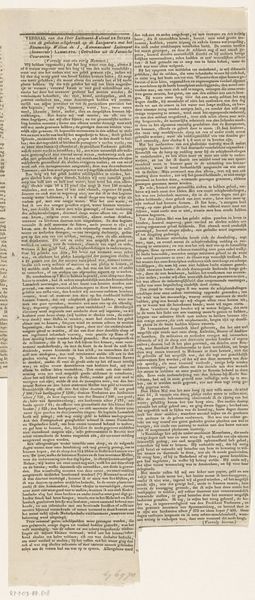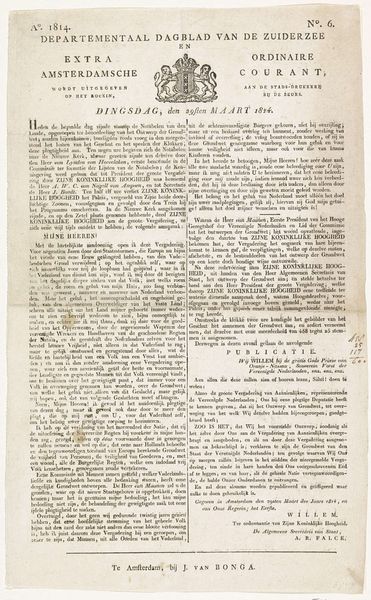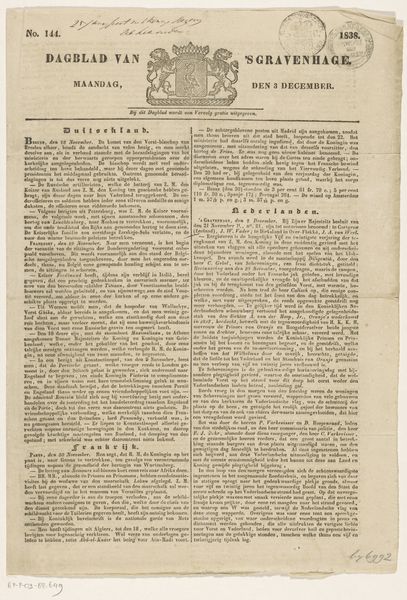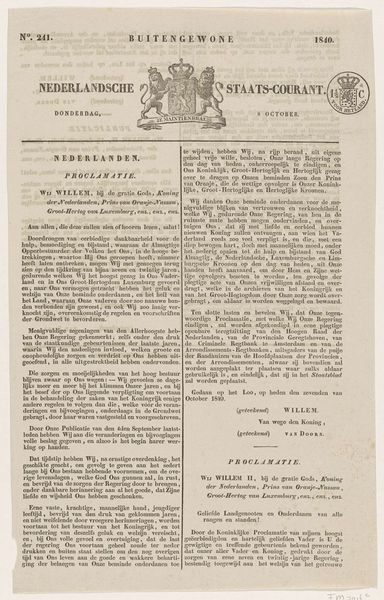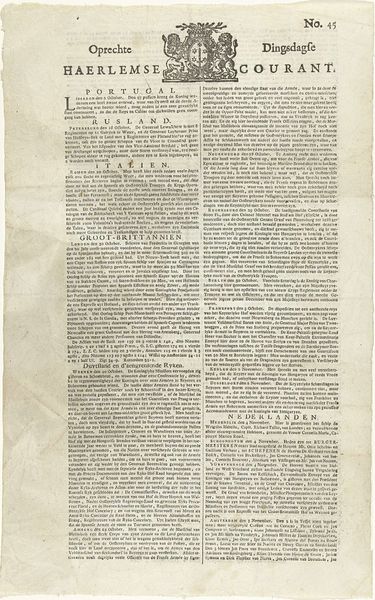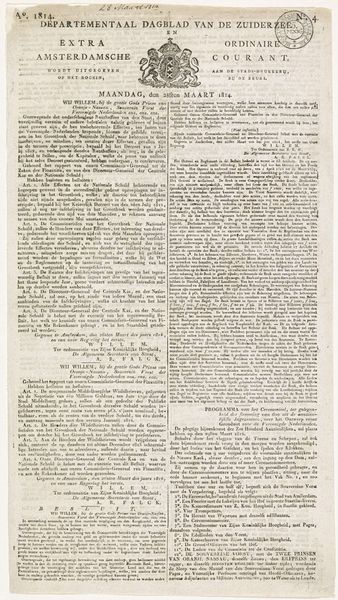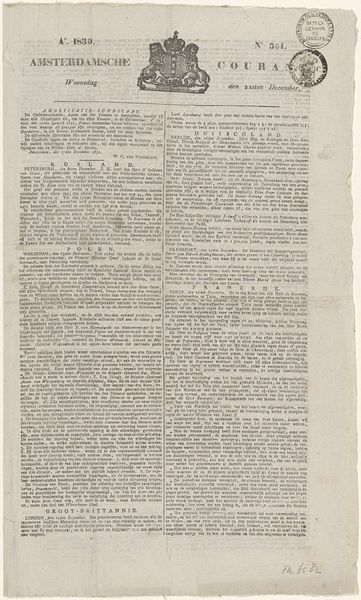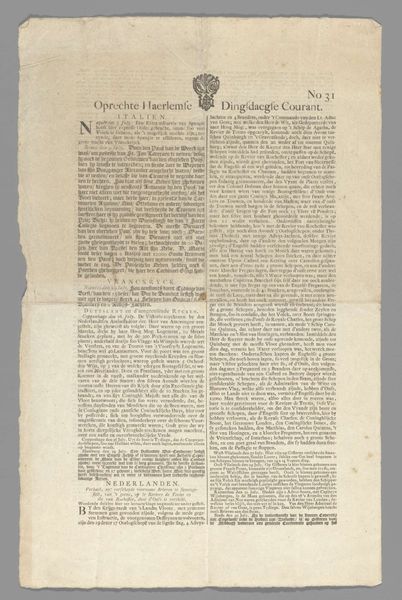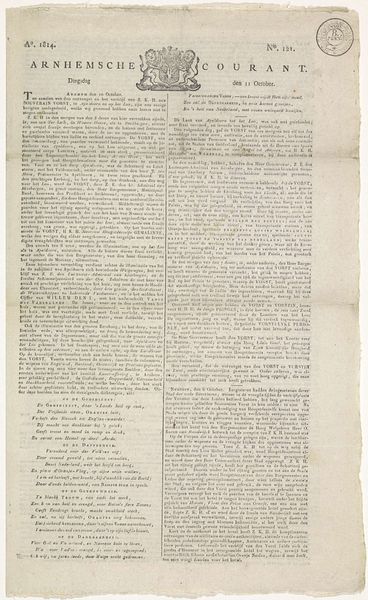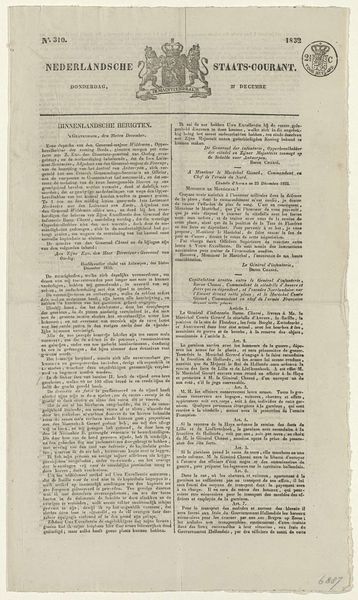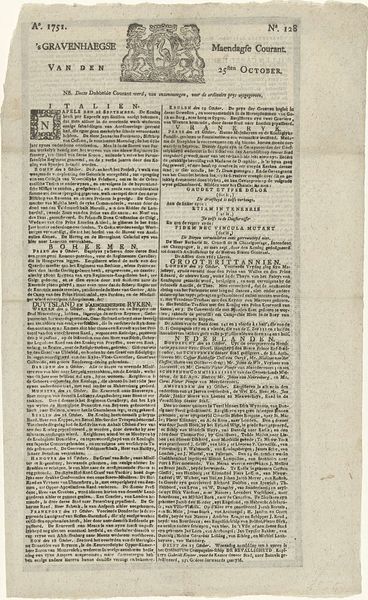
Buitengewoon Dagblad van 'sGravenhage over de berechting van Constant Polari, 1834 Possibly 1834
0:00
0:00
graphic-art, print, typography
#
graphic-art
# print
#
typography
Dimensions: height 345 mm, width 243 mm
Copyright: Rijks Museum: Open Domain
Curator: This is an extraordinary newspaper page titled “Buitengewoon Dagblad van 's Gravenhage over de berechting van Constant Polari, 1834." The paper details the trial of Constant Polari and we believe it was printed around the same year. It's part of the Rijksmuseum's collection. Editor: The density of text is immediately striking. It is monochrome, dense and slightly off-white with age. There is a small decorative section, the crest above the masthead, but essentially it is pure communicative intent, almost aggressive in its directness. Curator: Indeed. The paper speaks volumes about the era's commitment to documenting events meticulously. Think about the social context; it speaks volumes of the state’s efforts in consolidating power in post-Napoleonic Netherlands, and the symbolic value of the king’s efforts in justice. Editor: While I agree about its historical value, look at how the text is organized. The lines of justification, the weight of the fonts employed; there's an internal structural logic at work beyond its immediate reporting of social conditions, a particular use of layout creating certain visual impact and order. The very act of creating such a meticulously organized surface provides information and meaning beyond simply what is reported. Curator: You are right, and I believe the story of Constant Polari itself provides another dimension to the artwork’s importance. Polari, who received the death penalty, was ultimately pardoned by the King. I wonder what he thought when seeing such news. He seems to have spent some time in the United States before, a country where forms of expression were possibly valued in other ways. I would be curious to dive deeper in this social and geographical reality. Editor: Certainly the paper invites diverse layers of interpretation, where the materiality intersects powerfully with cultural meaning. I think seeing this piece brings attention to graphic communication not as purely a neutral tool but as a means of expression as pertinent as any painting. Curator: For me it illustrates the potency in primary documents and our relation to a lived world of inequality. Editor: Indeed, it reminds me to be alert to the unspoken structural choices that affect the presentation of any and all communication that attempts to frame any event, past or present.
Comments
No comments
Be the first to comment and join the conversation on the ultimate creative platform.
